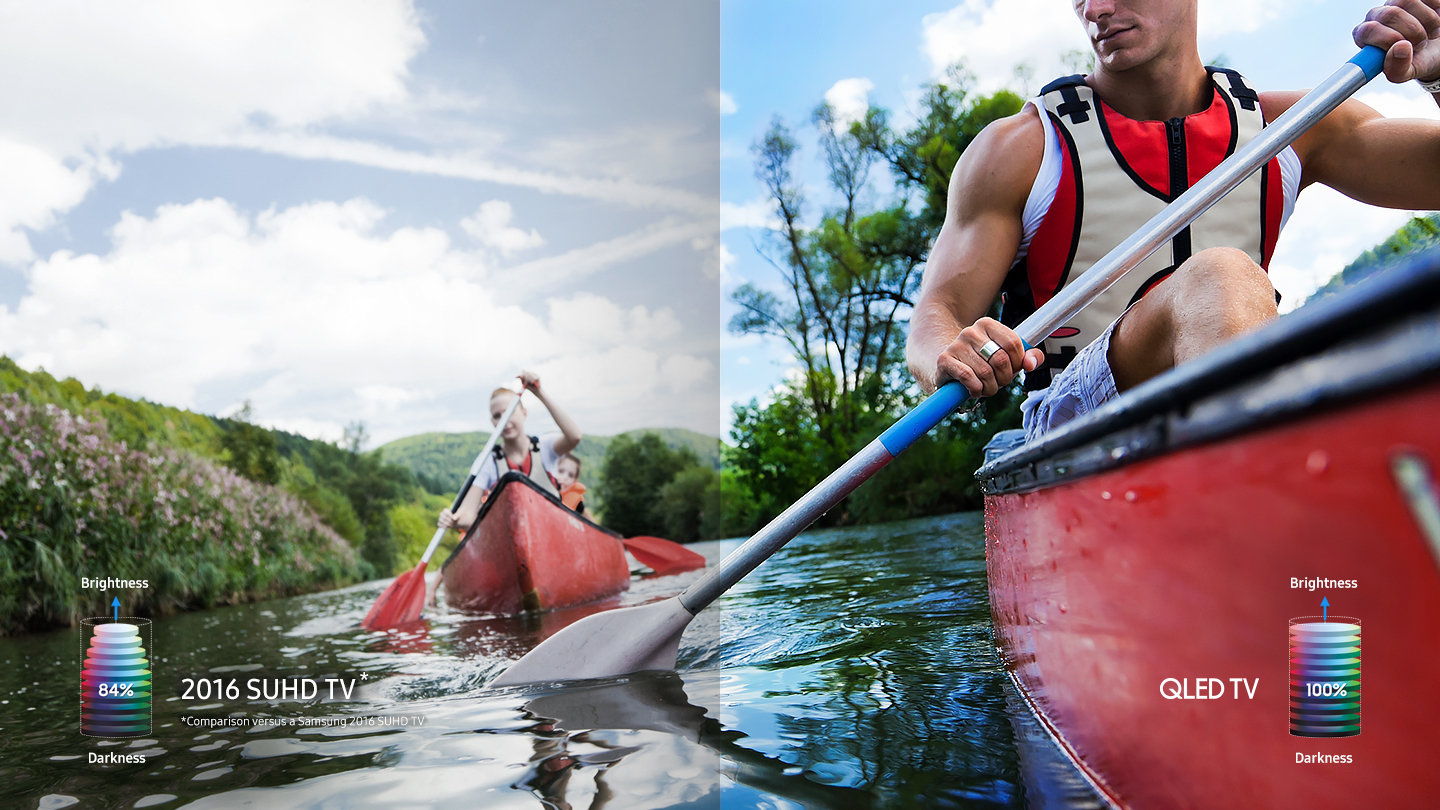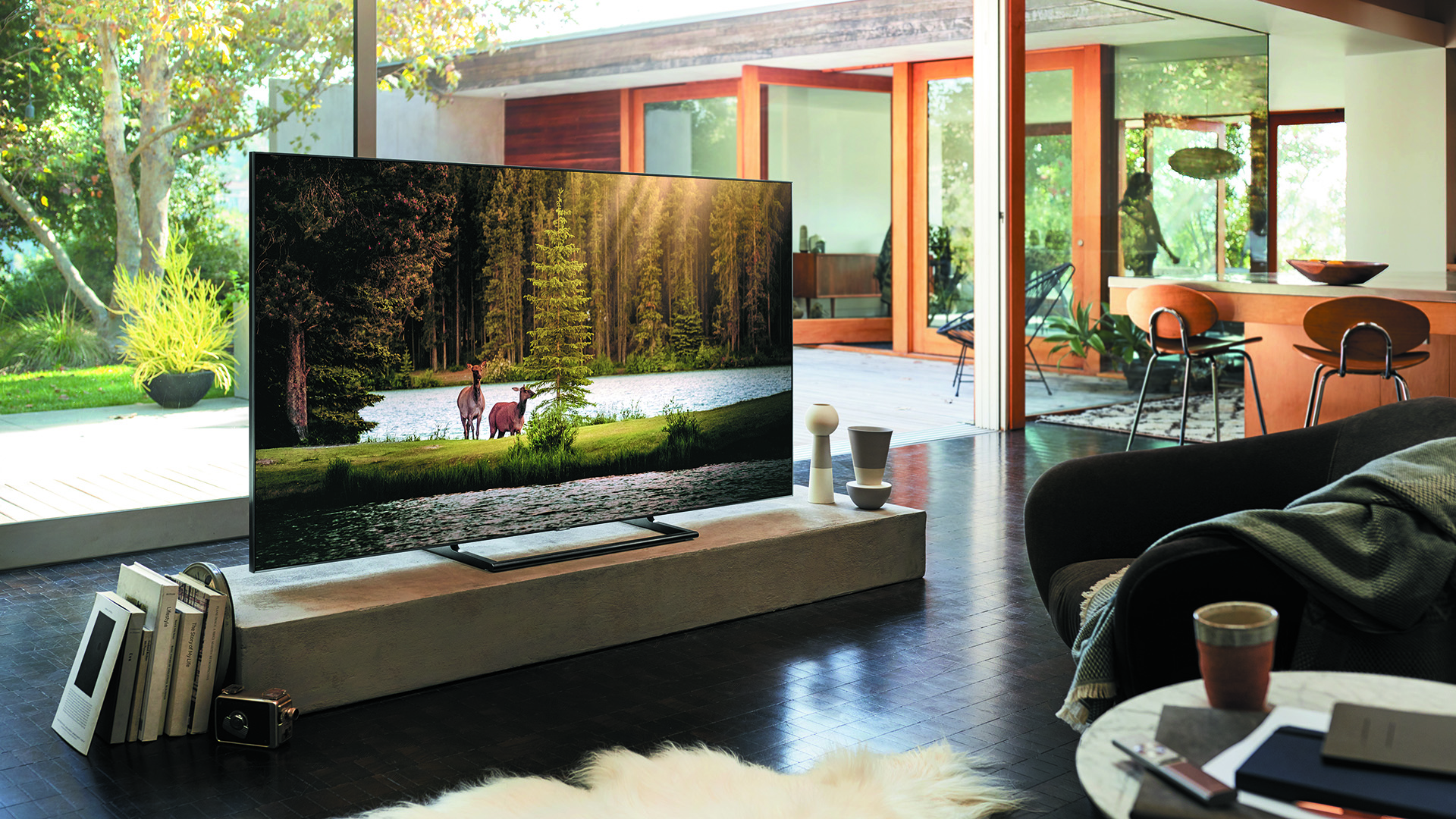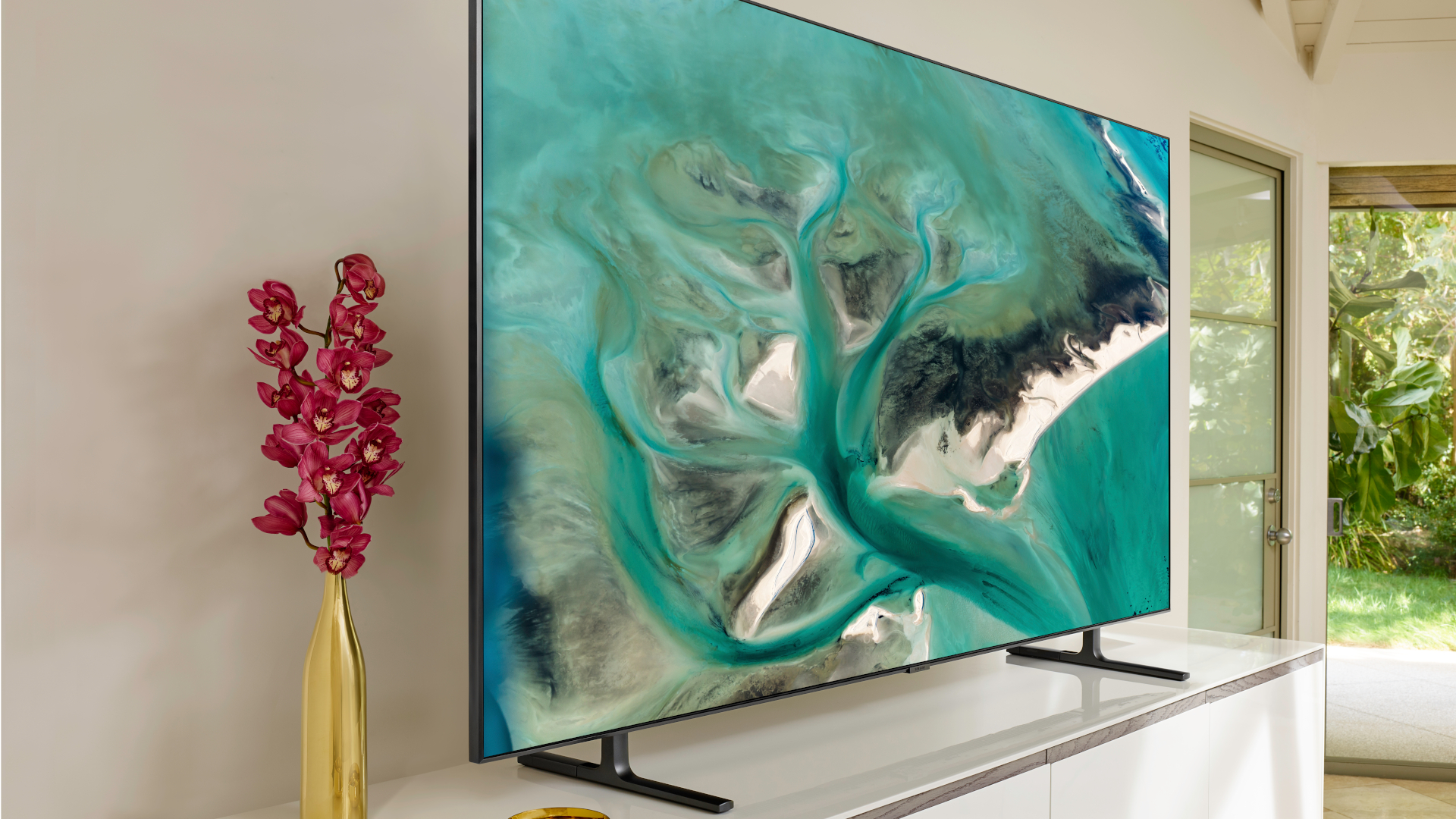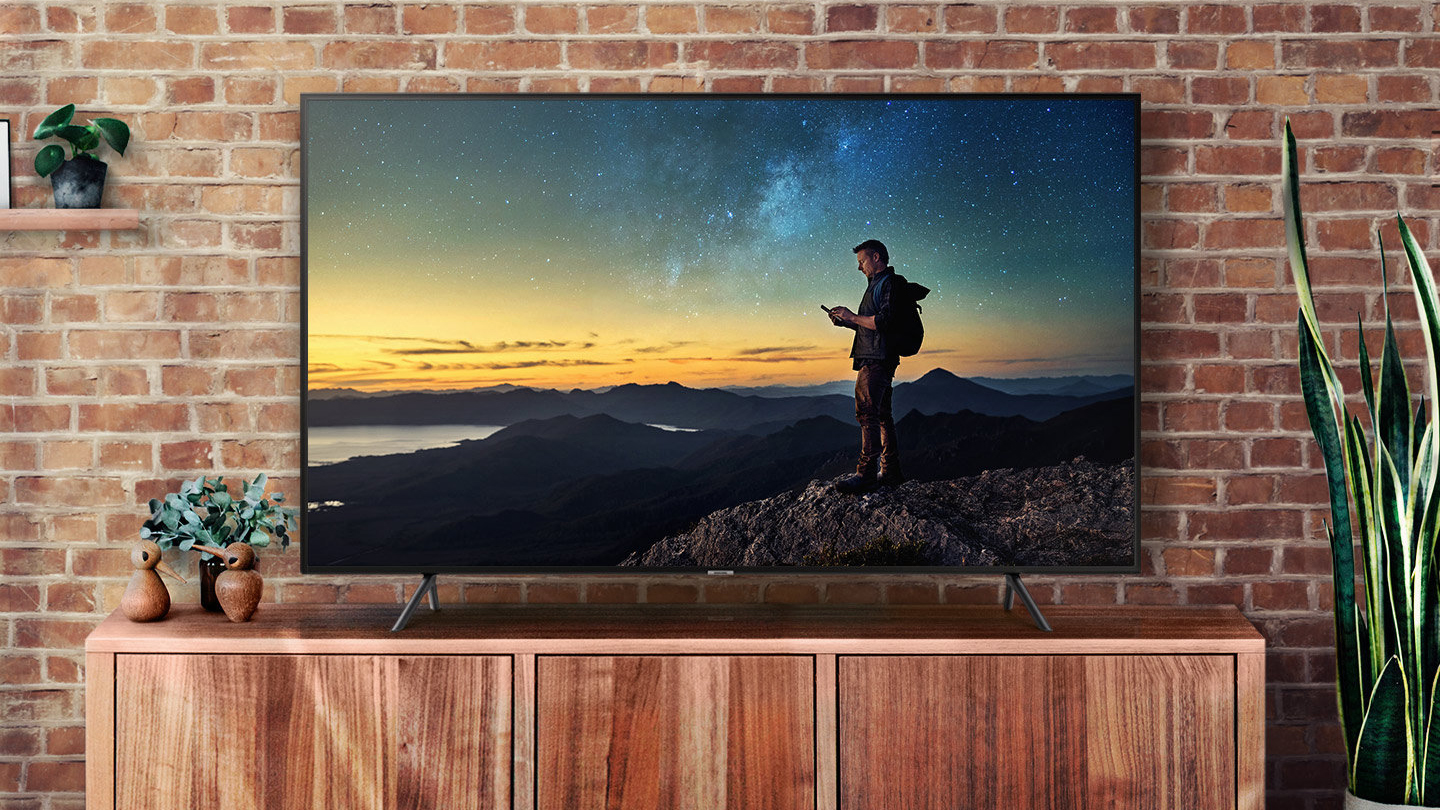If you're looking for the best Samsung TV, look no further. We've brought together a conclusive list of the latest and greatest Samsung televisions available for you to buy.
Chances are, if you're buying a new TV, it's from Samsung. The Korean manufacturer has been the top TV manufacturer for the last 10 years – selling as many television sets as Sony and LG put together. (For that reason, you'll likely find a lot of Samsung sets in our Black Friday TV deals guide in the coming weeks.)
- Want to know the best Samsung TVs to come? See our guide to the Samsung TV lineup in 2019
One of the driving forces behind Samsung's success – and probably the reason you're here – is that Samsung puts out a huge number of TVs each year. We already have word of a huge number of Quantum dot (QLED) models, upgraded Designer TVs, and more still to come in 2019, though the list below is pieced together from the best sets currently on the market.
Whatever you're looking for in a television, there should be Samsung TV out there to meet your needs – though telling the difference between their long and iterative product names can be confusing work.
Don't worry though – we're here to help. Whatever it is you're looking for and whatever your budget, we’ll help you pick out the best Samsung TV.
Why Samsung over LG or Sony?
Considering you've landed on this page, we're sort of assuming you had Samsung in mind – why else shop for the best Samsung TV? But maybe you’re still in that research phase where you’re not quite sure on Samsung, and would like to know why so many other people – reviewers and enthusiasts alike – ride Samsung’s hype train.
Samsung holds such strong sway with these folks because its TVs are generally more colorful and much brighter than the competition, especially in the QLED range.
Also important to the discussion: Samsung TVs typically do a great job with upscaling (turning HD into 4K), and usually perform better than LG sets when handling scenes with fast motion. They offer a technology called HDR10+ that makes colors look super vivid, and input lag is generally pretty low, too, which is great for gamers looking to use the TV with the Xbox One X or PS4 Pro.
On the downside, Samsung TVs are generally more expensive than those made by their rivals, and aren’t always incredibly long-lived. I’m not sure if you know this, but Samsung has a bit of a reputation for creating some… explosive products.
The other problem with Samsung TVs is that they don’t support Dolby Vision – an HDR format that delivers higher brightness and better colors than HDR10.
All that being said, the good often outweighs the bad, and here at TechRadar we recommend Samsung screens to folks who have a little bit more to spend and are looking for the most picturesque TVs (though there are some good budget and mid-range options too, as you'll see below).

- How's Samsung's Tizen operating system? See our smart TV guide to find out
Best Samsung TV: naming structure explained
Before we dive into specific models, let’s spend a second taking apart Samsung’s naming convention. Once you understand how it works, you’ll be able to read the obfuscated labels just as well as any electronics employee – which is a huge advantage if you’re heading out on Black Friday or Cyber Monday in search of some deals.
We mentioned the Samsung UN55MU7000FXZA up above, so let’s use that as an example.
The UN signifies that you’re talking about the American model of the TV. If you’re in the UK, you might be more familiar by seeing a ‘UE’ before all of the other numbers while Australian or Asian readers might have seen a UA prefix before.
Of course, if you’re buying a new QLED TV from Samsung, you’ll find QN, QE or QA in this spot instead.
If you buy a TV in one region and move to another, that could present some issues but as long as you buy a TV for your region you’ll be OK.
The number after the UN/UE pr QN/QE prefix is the screen size. A ‘55’ means the TV is 55-inches. A Samsung UN49MU6500 is an American 49-inch TV, while a Samsung UN65MU6300FXZA is an American 65-inch TV.
After the MU and the first two numbers come a second letter pair. This pairing helps indicate which year the TV comes from. An M- or an MU- means the TV is from 2017, as are all of the QLED TVs (the Q9F, Q8C, Q8F, Q7C and Q7F).
If you see KS or KU in the title, the TV was made in 2016. JU and JS TVs were made in 2015. HU was 2014, the F-series from 2013, so on and so forth.
The last four numbers are the series. In 2017, Samsung produces TVs in five main series: the 5-Series, 6-Series, 7-Series, 8-Series, 9-Series, alongside QLED TVs and the more lifestyle-centric The Frame and Serif TVs.
The higher up the series is, the more functionality it has. It’s pretty hard to break it down by series, as some larger screen sizes have different feature sets than smaller screen sizes, but the higher series TVs have features such as HDR, 4K, higher brightness settings, better motion handling and better operating systems.
The typical rule of thumb is that higher is better, but also generally more expensive, too.
Last but not least you have the FXZA – a letter combination that denotes region (the A stands for America) and, for some odd reason, inventory tracking. This last part largely can be ignored unless you’re entering the TVs into a database.
The best Samsung TVs at a glance
- Best Samsung TV: Samsung Q90 QLED
- Best reasonably priced: Samsung Q80 QLED
- Best on a budget: Samsung NU7100
So, what is the best Samsung TV?

Samsung Q9FN (QN65Q9FN). Image Credit: Samsung
Samsung's flagship 4K QLED for 2019 has somehow managed to outdo last year's Q9FN, which previously held the top spot on this list.
As the top model in Samsung's QLED range – 8K models like the Q950R aside – the Q90 offers a truly dynamic picture with market-leading picture processing and incredible HDR images. Not to mention a dazzling peak brightness of 1,600 nits (double that of most OLEDs). And with a sleek, bezel-less design, and the OneConnect box to tidy away all your cables, the Q90 is as nice to look at when the TV is off as well.
But one of the most impressive innovations with the Q90 is the viewing angles: something that LCD panels traditionally struggle with, given that backlighting usually faces directly forwards. Samsung has tackled the problem admirably, with its Ultra Viewing Angle technology meaning that contrast and color are as strong off-axis as they are head-on.
Add to that the built-in Bixby voice assistant and comprehensive smart platform, and you have a top-class television full able to compete with any OLED TVs.
If you want the absolute best Samsung TV, the Q90 most certainly is it.
Read the full review: Samsung Q90 QLED TV
If the price tag is making you gape, don't worry: there's an extensive Samsung TV range and plenty of cheaper models to contend with, without needing a big drop in quality.
Instead, let's set the budget at something a bit more reasonable.
What's the best reasonably priced Samsung TV?

Image Credit: Samsung
The Samsung Q80R QLED TV isn't the flashiest QLED put out this year – in fact, it's third in the line-up after the Samsung Q90 and Samsung Q85. The difference between each one might be incremental, but by the time you've got the the Q80R, you've got a substantial price saving from the higher-end models.
The Q80R still packs in everything that makes a QLED a QLED in 2019: a dazzlingly bright display, a direct full array backlight, and Samsung's new Ultra Viewing Angle technology (which keeps colors looking rich even from off-axis). Not to mention voice control through Samsung's Bixby voice assistant, and Airplay 2 functionality.
But you get all that for only £1,999 / $ 1,999 (around AU$ 2,900) RRP for the 55-inch model, with prices already dropping to £1,699 / $ 1,599 (around AU$ 2,300) through most retailers. Buyers in the US also have the option of some massive 75-inch and 82-inch sizes alongside the regular 55- and 65-inch models.
As it's Samsung, there's no Dolby Vision support – meaning you won't get the best of dynamic HDR through Netflix and the like – opting instead for HDR10+, which is used by Amazon Prime.
If you're after a compromise between price and performance in your hunt for the best Samsung TV, you're looking at it.
Those in the UK, be warned though: you won't get the Freeview Play UI, though you should be able to access most domestic channels' catch-up services individually.
Read the full review: Samsung Q7FN QLED TV
OK, but what's the best cheap Samsung TV?

Samsung NU7100 Series UHD TV (Image Credit: Samsung)
If Samsung's Q9F is a Ferrari and the Q7FN a Camaro, the NU7100 is a Honda: It's affordable and gets around just fine. It might not be the most premium machine on the market – and can certainly stand to learn a few tricks from the higher-tiered competition – but it's hard to complain about a TV that, most of the time, costs in the region of $ 400 / £400.
Called the Samsung NU7120 in the UK, this TV offers almost all of the smart functionality as the top-tier models in a cheaper-but-still-good package. It's not going to blow you away if you're a cinephile – while it supports HDR / HDR10+, you're only getting a very basic version of high dynamic range. The edge-lit panel and low brightness don't hinder the picture much though, even if it can't compete for visuals with the more premium models listed above.
However, if you're a gamer looking for low input lag, or someone angling for 4K without breaking the bank, this is a contender for the best Samsung TV as such a high-performing television at a low, low cost.
Read the full review: Samsung NU7100
- On the lookout for a secondary screen or bedroom TV? See our guide to the best small TVs